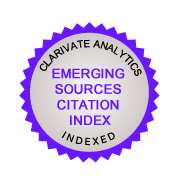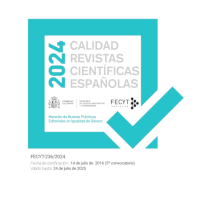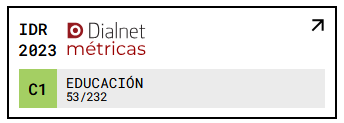The multiple intelligence theory for the teaching of languages
DOI:
https://doi.org/10.18172/con.2594Keywords:
Educational Psychology, mother tongue, foreign languages, language instruction, Intelligence,Abstract
In the following essay we analyse the Multiple Intelligence Theory of Howard Gardner focus on the teaching of languages, in order to describe its main points, such us: its description; the types of intelligences explained in it; and the activities, that some authors describe, for developing this theory in the teaching and learning language context.Downloads
References
ALART, N. (2010). Una mirada a la educación desde las competencias básicas y las inteligencias múltiples. Aula de innovación educativa, 188, 61-65.
AMSTRONG, T. (2006). Inteligencias múltiples en el aula: guía práctica para educadores. Barcelona: Paidós.
ANTUNES, C. (2005). Juegos para estimular las inteligencias múltiples. Madrid: Narcea.
BARRIOS, Mª. E. (2002). Propuestas de aplicación de la Teoría de las Inteligencias Múltiples a la enseñanza de una lengua extranjera. Greta: revista para profesores de inglés, 10(1), 25-29.
CAMPBEL, L. (1997). How teachers interpret MI Theory. Educational Leadership, 55(1), 15-19.
CARRILLO GARCÍA, M. E. (2008). Roald Dahl y la Literatura Infantil y Juvenil en la Didáctica de las Lenguas. Una propuesta para la Mejora de la Competencia Literaria en el aula. Tesis doctoral. Murcia: Universidad de Murcia. Disponible en: http://www.tdx.cat/handle/10803/10763.
CHRISTISON, M. (1997). An introduction to multiple intelligence theory and second language learning. En J. Reid (Ed.), Understanding Learning Styles in the Second Language Classroom. Englewood Cliffs, N.J.: Prentice Hall/Regents, pp. 1-14.
CHRISTISON, M. (1998). Applying multiple intelligence theory in pre-service and inservice TEFL education programs. English Language Teaching Forum, 36(2), 2-13.
CHRISTISON, M. (1999). Multiple Intelligences: Teaching the whole student. ESL Magazine, 2(5), 10-13.
CHRISTISON, M. (2001). Applying Multiple Intelligences Theory in the Second and Foreign Classroom. Burlingame: Alta Book Center.
FERRÁNDIZ, C., BERMEJO, R., FERRANDO, M. y PRIETO, M. D. (2006). Fundamentos psicopedagógicos de las inteligencias múltiples. Revista española de pedagogía, 64(233), 5-19.
GARDNER, H. (1983). Frames of mind: The Theory of Multiples Intelligences. New York: Basic Books.
GARDNER, H. (1987). La Teoría de las Inteligencias Múltiples. México: Fondo de Cultura.
GARDNER, H. (1993). Multiple Intelligences: The Theory and Practice. New York: Basic Books.
GARDNER, H. (1994). Educación artística y desarrollo humano. Barcelona: Paidós.
GARDNER, H. (1995). Inteligencias múltiples. La teoría en la práctica. Barcelona: Paidós.
GARDNER, H. (1995). Mentes creativas. Una anatomía de la creatividad vista a través de las vidas de S. Freud, A. Einstein, P. Picasso, I. Stravinsky, T. S. Elliot, M. Graham, M. Gandhi. Barcelona: Paidós.
GARDNER, H. (1996). La nueva ciencia de la mente. Historia de la revolución cognitiva. Barcelona: Paidós.
GARDNER, H. (1997). Arte, mente y cerebro. Una aproximación cognitiva a la creatividad. Barcelona: Paidós.
GARDNER, H. (1997). La mente no escolarizada. Cómo piensan los niños y cómo deberían enseñar las escuelas. Barcelona: Paidós.
GARDNER, H. (1998). Mentes líderes. Una anatomía del liderazgo. Barcelona: Paidós.
GARDNER, H. (1999). Who owns intelligence? The Athantic Monthly, February, 67-76.
GARDNER, H. (1999). Mentes extraordinarias. Cuatro retratos para descubrir nuestra propia excepcionalidad. Barcelona: Kairós.
GARDNER, H. (2001). El proyecto Sprectrum (I). Madrid: Morata.
GARDNER, H. (2001). El proyecto Sprectrum (II). Madrid: Morata.
GARDNER, H. (2001). El proyecto Sprectrum (III). Madrid: Morata.
GARDNER, H. (2002). Buen trabajo. Cuando ética y excelencia convergen. Barcelona: Paidós.
GARDNER, H. (2002). La educación de la mente y el conocimiento de las disciplinas. Lo que todos los estudiantes deberían comprender. Barcelona: Paidós.
GARDNER, H. (2002). La nueva ciencia de la mente. Historia de la revolución cognitiva. Barcelona: Paidós.
GARDNER, H. (2002). Mentes creativas. Una anatomía de la creatividad. Barcelona: Paidós.
GARDNER, H. (2003). La inteligencia reformulada. Las inteligencias múltiples en el siglo XXI. Barcelona: Paidós.
GARDNER, H. (2005). Las cinco mentes del futuro. Barcelona: Paidós.
GOLEMAN, D. (1996). Inteligencia emocional. Barcelona: Kairós.
GOLEMAN, D. (1999). La práctica de la inteligencia emocional. Barcelona: Kairós.
LARSEM-FREEMAN, D. (2000). Techniques and Principle in Language Teaching (Teaching Techniques in English as a Second Language). Oxford: Oxford University Press.
LAZEAR, D. (1991). Seven Ways of Teaching: The Artistry of Teaching with Multiple Intelligences. Palatine, Ill: IRI Skylight.
LÓPEZ VALERO, A. y ENCABO, E. (2013). Fundamentos didácticos de la lengua y la literatura. Madrid: Síntesis.
LORENZO, L., TRUJILLO, F. y VEZ, J. M. (2011). Educación bilingüe. Integración de contenidos y segundas lenguas. Madrid: Síntesis.
NICHOLSON-NELSON, K. (1998). Developing Students’ Multiple Intelligence. New York: Scholastic.
PRIETO, M. D. y BALLESTER, P. (2003). Las inteligencias múltiples: diferentes formas de enseñar y aprender. Madrid: Pirámide.
PRIETO, M. D. y FERRÁNDIZ, C. (2001). Inteligencias múltiples y currículum escolar. Archidona (Málaga): Aljibe.
REID, J. (1997). Understanding Learning Styles in Second Language Classroom. Englewood Cliffs, N. J.: Prentice Hall/Regents.
RICHARDS, J. C. y ROGERS, S. T. (Eds.) (2001). Approaches and Methods in Language Teaching. Cambridge: Cambridge University Press.
TRUJILLO, F. (2012). Propuestas para una escuela en el siglo XXI. Madrid: Catarata.
Downloads
Published
How to Cite
Issue
Section
License
The authors retain copyright of articles and authorize Contextos Educativos. Revista de Educación the first publication. They are free to share and redistribute the article without obtaining permission from the publisher as long as they give appropriate credit to the editor and the journal.
Self-archiving is allowed too. In fact, it is recommendable to deposit a PDF version of the paper in academic and/or institutional repositories.












